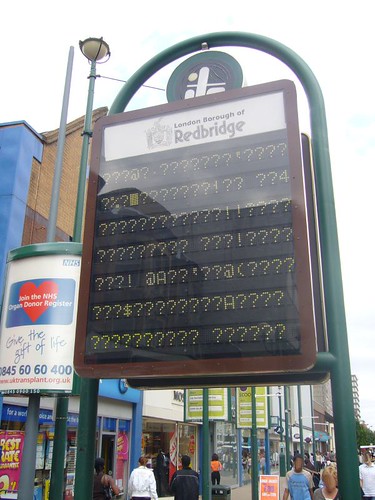I have a confession to make: I hate training days. I attend them when I have no real option, but I abhor them. And with good reason. Most of the so-called “training days” I’ve attended have consisted of one or more of the following:
· Non-stop lecturing. In one training day I attended, the keynote speaker lectured us for an hour and a half on the importance of collaborative learning in the classroom. But that was nothing compared to the six hours of lecturing on a training day in Assessment for Learning – which, as you probably know, is all about interaction and questioning.
· Sitting in silos following step-by-step instructions from someone reading from a manual.
· The so-called expert responding to every question with, “Well, what do you think is the answer to that question?”
So, when I was invited to attend the Technology for Print Disabilities training day, run by Dyslexia Action, I was filled with a sense of dread. True, it was free. But I’d have to leave the house at the crack of dawn, travel a couple of hundred miles, return well into the evening – and all for a topic which I assumed had only a tangential relevance to my day-to-day work.
Nevertheless, applying the deep philosophical outlook I learnt listening to Fats Waller (“One never knows, do one?”), I said to myself, “OK, let’s give it a whirl.”
I’m pleased I did. I’m pleased that all my preconceptions turned out to be misconceptions.
 Not a great example of making information available and accessible!
Not a great example of making information available and accessible!
First, I had no idea of the number of guises dyslexia can take, or the fact that it is often combined with some other condition. The whole field is quite complex, and understanding that means that should I ever find myself in the position of teaching someone showing signs that something is not quite right in the reading department – for example, being reluctant to read out loud – I would attempt to investigate whether something else is going on rather than, say, natural shyness.
Second, the range of software introduced during the course of the day reaffirmed my long-held belief that it’s not only people with special needs who can benefit from special needs software. For example, MyStudyBar, available from http://eduapps.org/?page_id=7, is a suite of 15 apps designed to make reading and writing easier. It includes, for instance, an app called Rapid Set, which enables you to set Windows colours very quickly, which could be ideal if you find the default colour settings difficult to read by, but don’t want to faff around delving into the depths of the Windows display options.
Third, the day was incredibly well-organised. The “lecturing” component was minimal, and by far the greater part of the day consisted of working with a small group of people looking at various kinds of hardware and software for around 20 minutes at a time, attempting to come to some conclusions as to which would be most appropriate for students with different manifestations of dyslexia and related issues.
Fourth, I pride myself on having a pretty good knowledge of Word and other Microsoft applications, but even I learnt a few things and, to my delight, was reminded of a brilliant feature in Word called Navigation View or Document Map (depending on the version of Word you’re using). It’s in the View menu, so if you have Word on your computer check it out now; don’t worry, I’ll wait.
Participants came away with a very handy set of Cue Cards related to accessibility. They’re full of useful hints and tips, and well-worth keeping by the computer. Also, being in black and white, they photocopy well.
Now, before I get too carried away, I do have one relatively minor criticism. We were informed that all the information on the Cue Cards may be found on the Load 2 Learn website (www.load2learn.org.uk). But who has the time to go foraging around for it? It would have been much better, in my opinion, to have set up a special area on the website where all the information contained in the Cue Cards, or at least links to it, could be found.
Alternatively, it may have been handy to have been given a USB stick containing the Cue Cards in digital format, preferably in something like RTF format so that people could copy, paste or repurpose the text to their heart’s delight.
But that, as I say, is pretty minor. If you get the chance to attend a similar training day run by Dyslexia Action, I’d say grab it with both hands.
Or, if you’re still unsure, look out for information about a Collaborate for Change-type event in which you will be able to attend a number of 20 minute discussions on various aspects of dyslexia and related issues. I’m sure you’ll discover something useful that you didn’t know about before!
I wrote this as a guest blogger on behalf of Dyslexia Action, but my opinions are my own.
Related articles

